Whether you’re looking for the perfect pair of sneakers, dress shoes, or boots, understanding women’s to men’s shoe size conversions can be a daunting task. In this guide, we’ll explore everything you need to know about sizing differences, the conversion process, and practical tips for finding the right fit. With cultural insights and real-world experience, this article aims to be your ultimate resource for navigating the world of shoes.
Table of Contents
- Understanding Shoe Sizes
- Women’s to Men’s Shoe Size Conversion Table
- Why Size Matters
- Factors Affecting Fit
- Finding the Right Fit
- Tips for Shopping for Shoes
- Popular Brands and Their Size Charts
- Tech and Services for Shoe Shopping
- Frequently Asked Questions
- Conclusion
Understanding Shoe Sizes
Shoe sizes can vary significantly across different brands and countries. Understanding the sizing system is essential for making informed purchases. In the U.S., shoe sizes are typically measured in inches and correspond to a specific number. However, the scale can differ for men’s and women’s shoes, which is crucial to consider when making a conversion.
How Shoe Sizes are Measured
Shoe sizes in the U.S. are based on a system that considers the length and width of the foot. The length is typically the most crucial factor, while width classifications such as ‘narrow,’ ‘standard,’ ‘wide,’ and ‘extra wide’ also play a vital role in comfort. For women, sizes tend to be approximately 1.5 sizes larger than their equivalent men’s sizes.
International Shoe Size Systems
In addition to U.S. sizes, other countries have different sizing systems (e.g., UK, EU, JP). Understanding these differences can help when purchasing shoes online or while traveling abroad.

Women’s to Men’s Shoe Size Conversion Table
Here’s a quick reference table to help you easily convert women’s shoe sizes to men’s sizes:
| Women’s Size (US) | Men’s Size (US) |
|---|---|
| 5 | 3.5 |
| 6 | 4.5 |
| 7 | 5.5 |
| 8 | 6.5 |
| 9 | 7.5 |
| 10 | 8.5 |
| 11 | 9.5 |
| 12 | 10.5 |
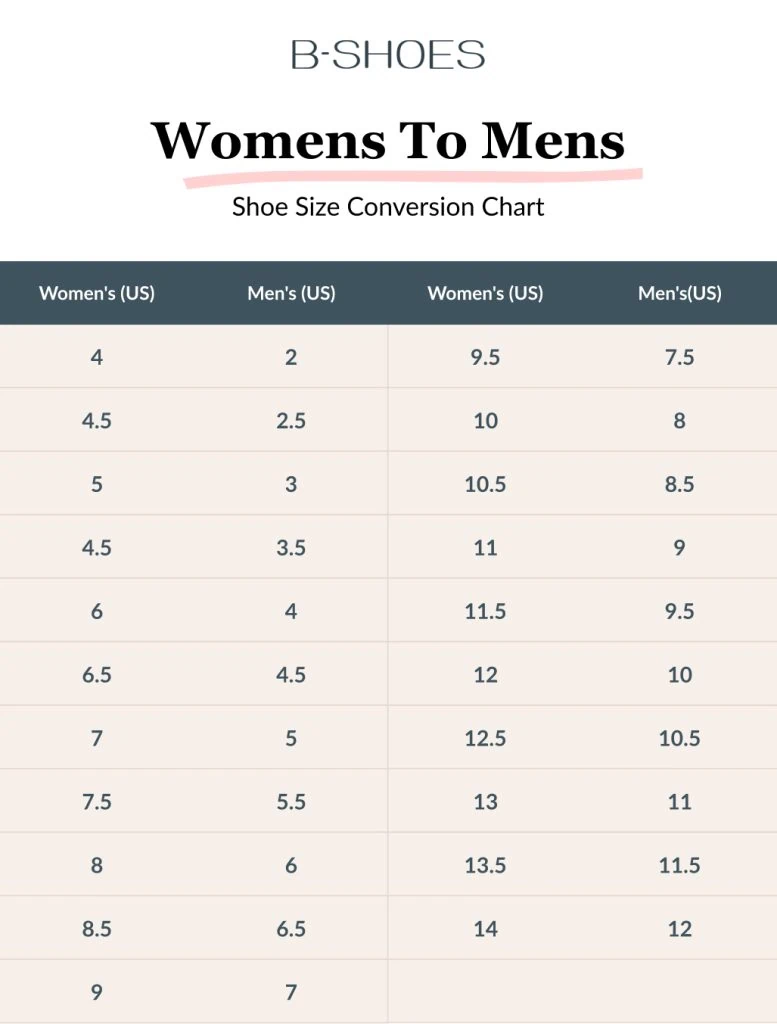
Why Size Matters
Wearing the right shoe size is crucial for comfort, support, and foot health. Ill-fitting shoes can lead to a range of issues, from blisters and calluses to long-term problems like plantar fasciitis. Understanding women’s to men’s shoe size conversions ensures that you choose appropriately sized footwear that supports your activities and lifestyle.
Factors Affecting Fit
When converting shoe sizes, several factors can influence the fit:
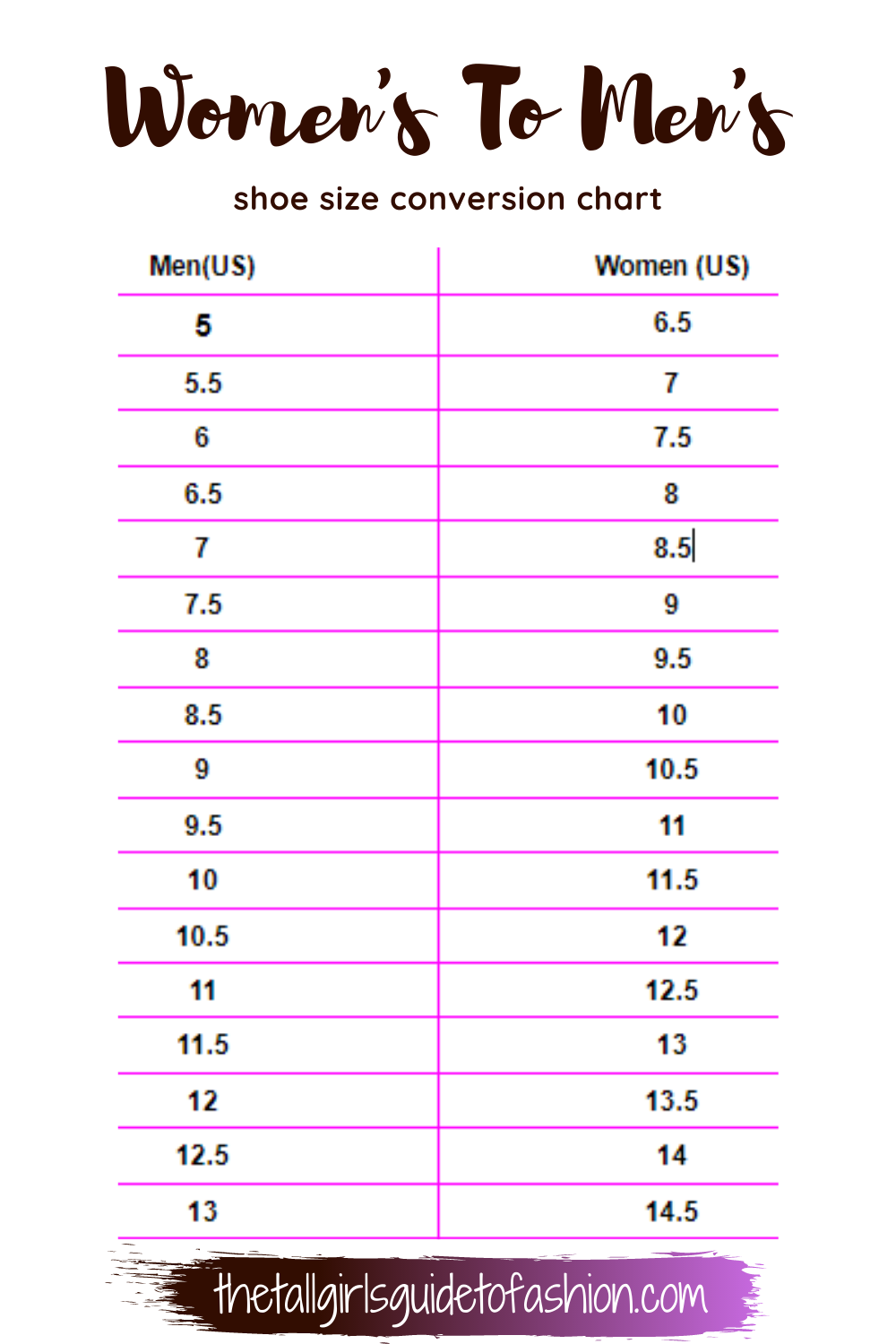
Brand Differences
Each brand may have a slight variance in sizing. For instance, Nike may fit differently than Adidas even if both shoes fall within the same size range.
Foot Shape and Width
Your foot shape can significantly impact how a shoe fits. Some styles might accommodate wider feet, while others may be more narrow, affecting overall comfort.
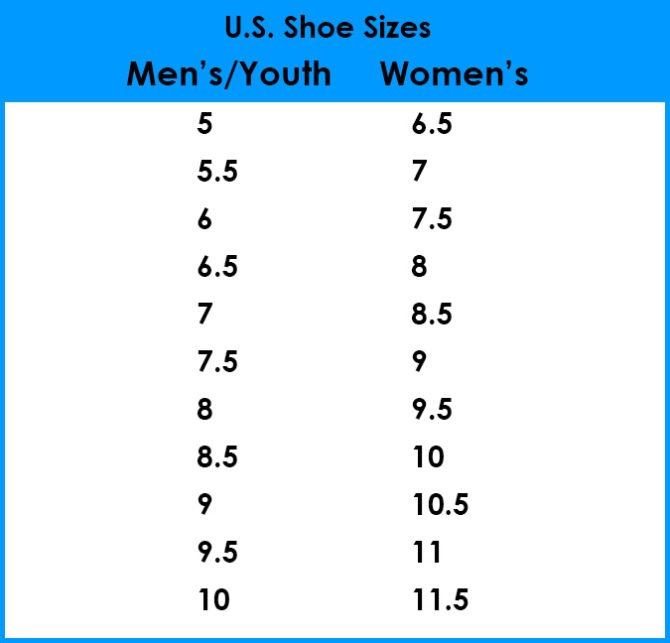
Socks and Orthotics
Consider what you’ll be wearing with the shoes. Thick socks or added orthotics will require you to adjust the size appropriately.
Finding the Right Fit
To ensure that your shoes fit perfectly, follow these guidelines:
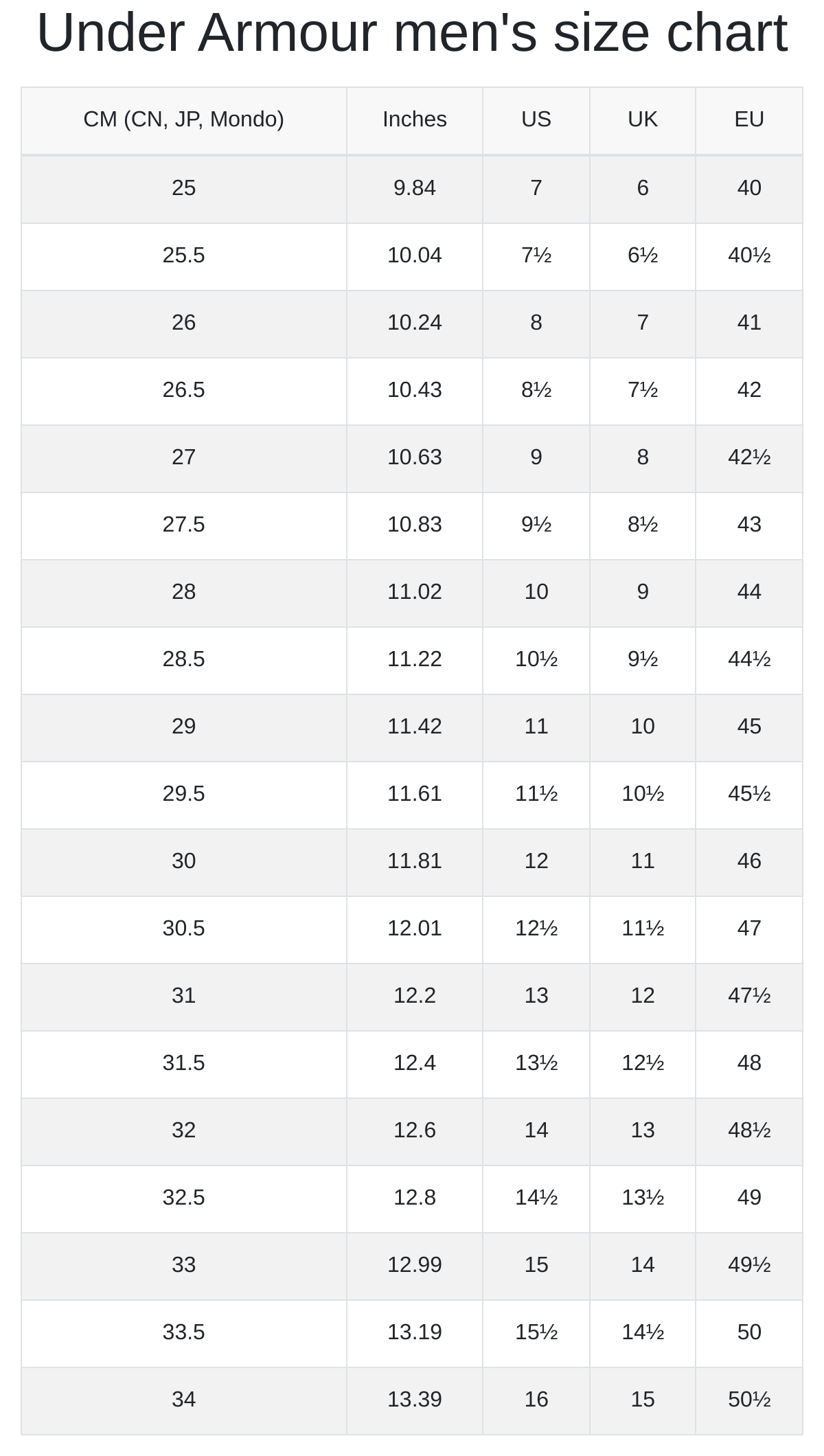
Measure Your Feet
Measure your feet at the end of the day when they are at their largest. Use a ruler or measuring tape for accuracy.
Try Before You Buy
If possible, try shoes on in-store, especially if it’s a brand you’ve never purchased before. Walk around to check for any discomfort.
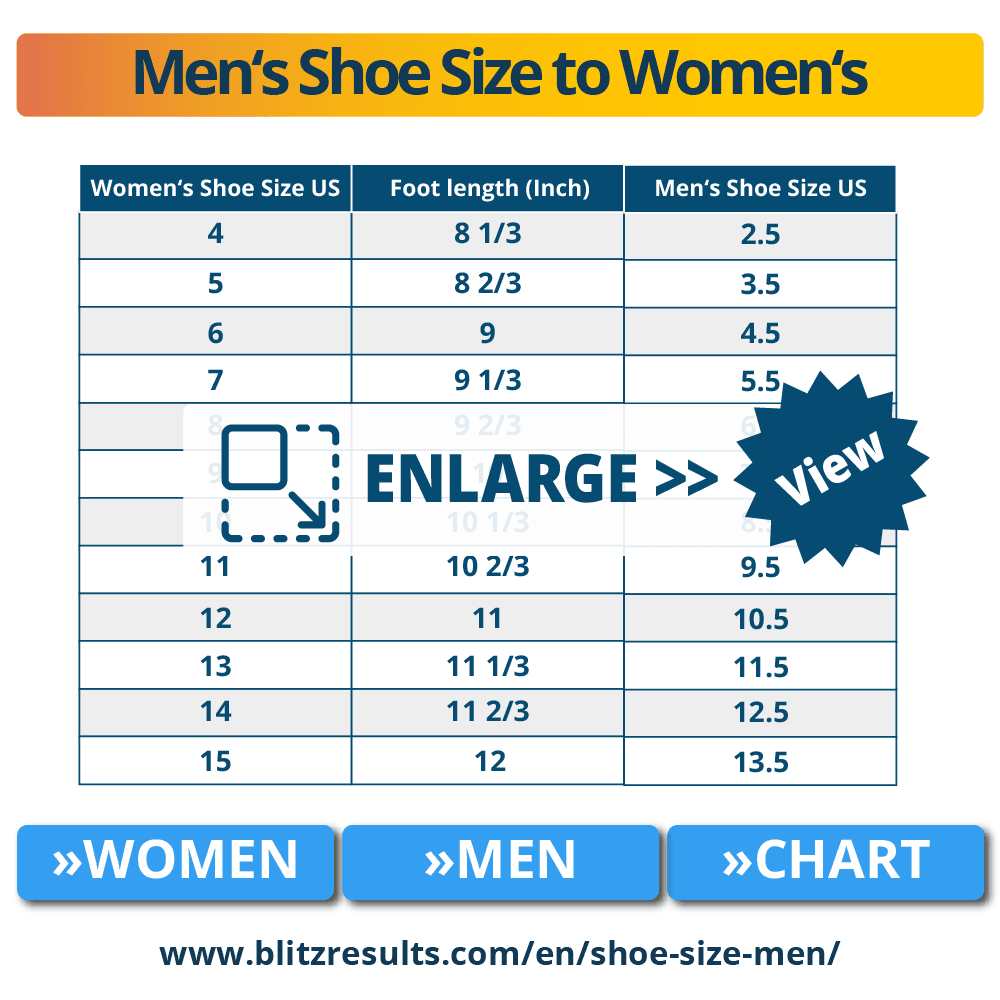
Read Reviews
Consumer reviews can provide insights about the fit and comfort of specific shoe styles or brands.
Tips for Shopping for Shoes
Here are some practical tips to make your shoe shopping experience smoother:
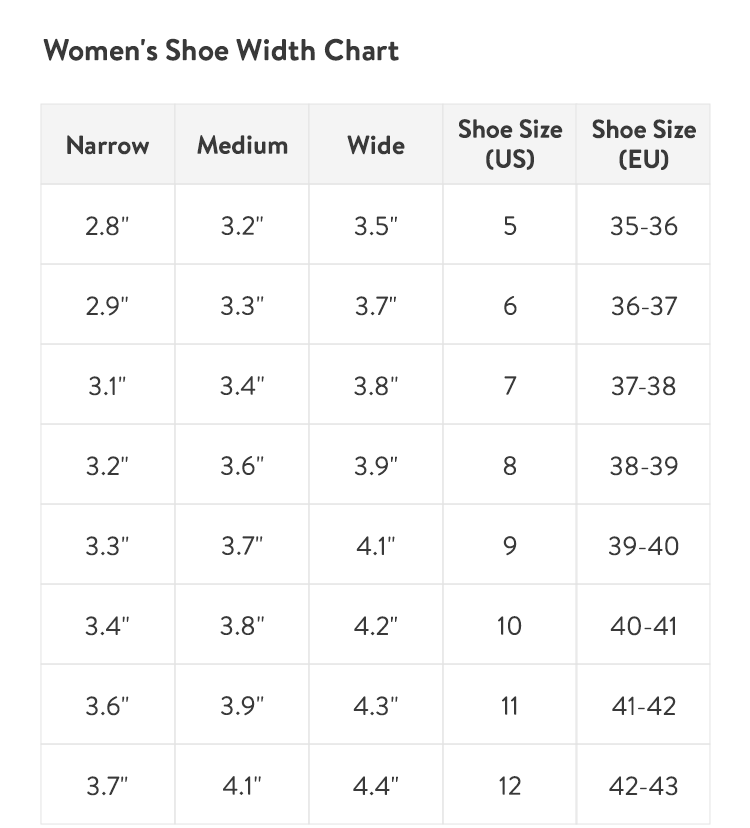
Shop Online with Caution
When shopping online, check return policies. Many retailers offer free returns, which is beneficial if the fit isn’t right.
Utilize Size Guides
Always refer to the brand’s size chart. Most brands will have a specific guide to offer accurate conversions from women’s to men’s sizes.
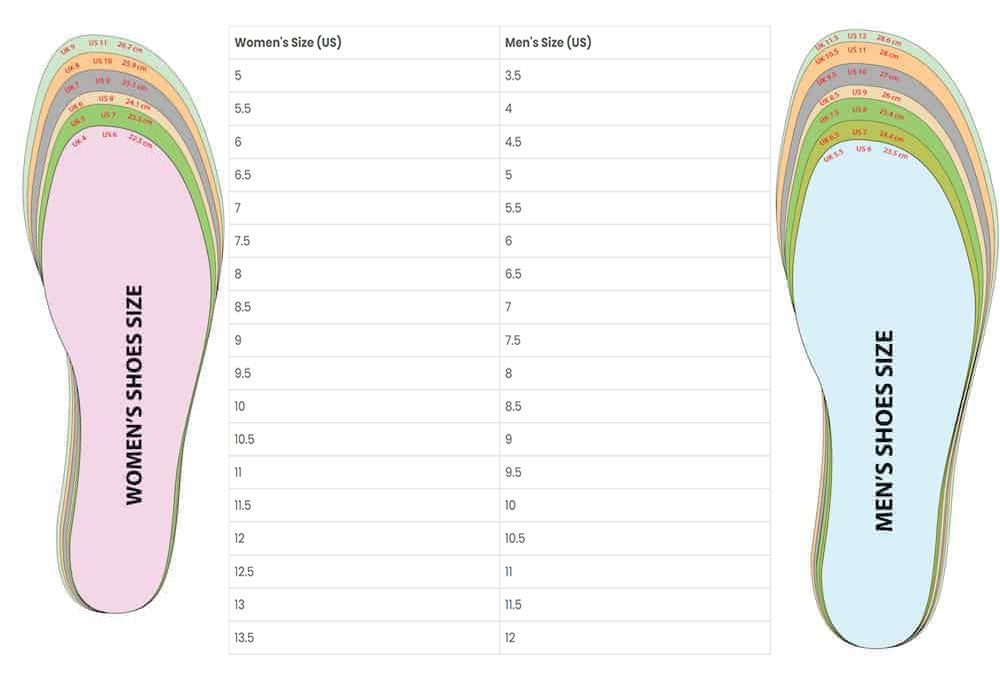
Don’t Rely Solely on Size
Just because a shoe is labeled a specific size doesn’t mean it will fit the same as another brand’s sizing. Always factor in style and brand when making a decision.
Popular Brands and Their Size Charts
Different brands have unique sizing formats. Here is a summary of popular brands and how their shoe sizes compare:

| Brand | Women’s Size (US) | Men’s Size (US) |
|---|---|---|
| Nike | 10 | 8.5 |
| Adidas | 9 | 7.5 |
| Reebok | 8.5 | 7 |
| Puma | 10.5 | 9 |
Tech and Services for Shoe Shopping
With the rise of technology, shopping for shoes has never been easier. Here are some helpful services:
Shoe Fit Technology
Some online retailers now utilize augmented reality (AR) to help you visualize how the shoes look on your feet. Brands like Nike and Adidas have adopted such technologies.
Foot Scanning Services
Many stores offer foot scanning services that provide a detailed analysis of your foot shape and recommend the best size and style for you.
Frequently Asked Questions
What is the average women’s to men’s shoe size conversion?
The average conversion is that women’s shoe sizes are typically 1.5 sizes larger than men’s. For example, a women’s size 8 is equivalent to a men’s size 6.5.
Can I wear men’s shoes if I wear a women’s size?
Yes, many women find men’s shoes to be comfortable, especially if they fit appropriately. Just be sure to check the size conversion chart!
What should I do if my shoes are too small after conversion?
If a shoe is too small, consider trying the next half or full size up. It’s also helpful to try different brands, as sizing can vary.
Conclusion
Shopping for shoes across genders can be an adventure filled with challenges and surprises. By understanding the differences in sizing, utilizing conversion tables, and being aware of factors that affect fit, you can make informed decisions that ensure comfort and style. Explore the world of footwear with confidence, knowing that the perfect pair of shoes is just around the corner!
For additional readings on shoe sizes and conversions, refer to sources like the ResearchGate or the ScienceDirect for in-depth analyses on foot health and shoe sizing.
Happy shoe shopping!